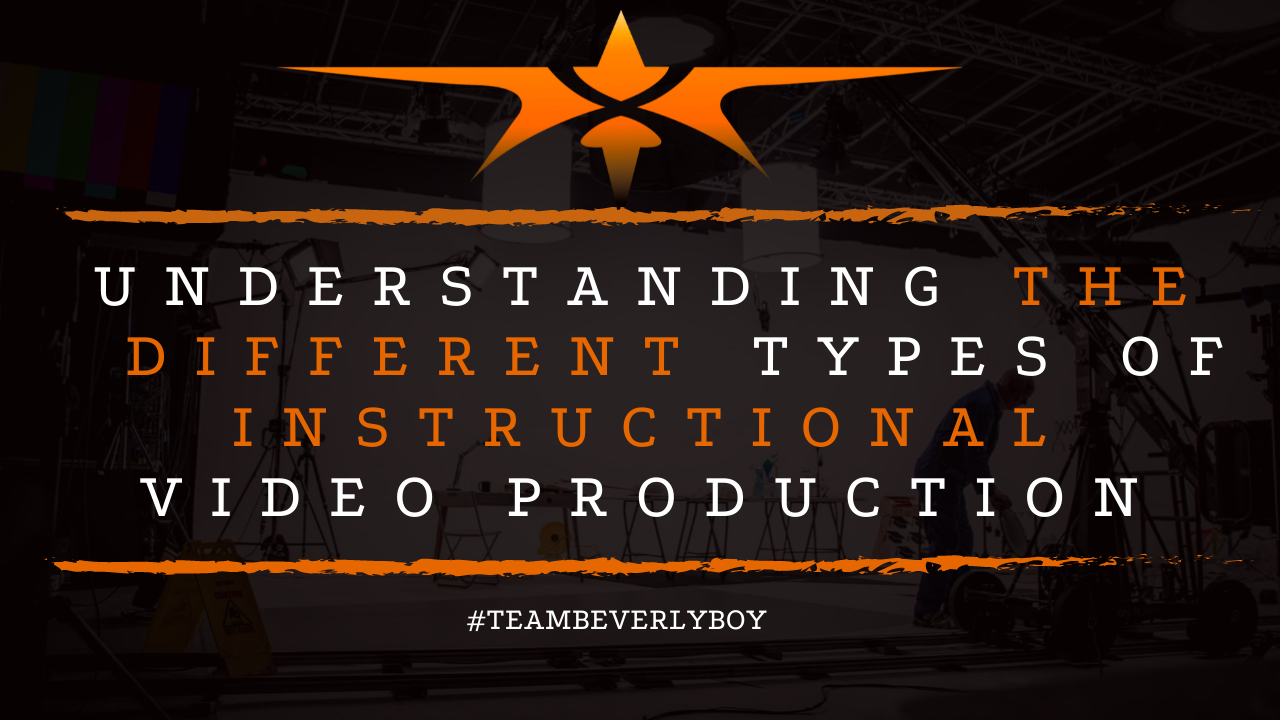
Understanding the Different Types of Instructional Video Production
Instructional videos are part of the eLearning industry which is expected to reach $375B by 2026. Within this industry, different types of instructional video production are utilized in order to produce various types of training videos and instructional content. The processes involved in the different types of instructional video production are largely going to be depend on the style of video that is being created.
To help you understand what to expect during the different types of instructional video production, we’ve outlined some of the key production factors to consider with each stage of production as it relates to each type of video being produced.

Scenario Training Video Production
Producing scenarios based training videos is generally a process of outlining each of the major scenarios or potential outcomes that must be included in the production, first. The next major step in producing these types of instructional videos is deciding on the different ways that interactive elements or scenarios will be built into the learning initiatives. Specialized software is used in the post-production process to incorporate the various scenarios and important interactive events that are necessary for this type of instructional video production.
Explainer Video Production
Producing explainer videos is generally a very straightforward process, but these videos are almost always animated which means they have a slightly different production process than live-action video content. The explainer video production process, particularly when it comes to producing animated explainer videos, involves the following steps:
- Outlining the script.
- Preparing the animations.
- Coordinating the audio, voice-over and music.
- Reviewing the final cut for distribution.
Different types of animation will involve different production processes. For instance, whiteboard animation involves creating the visuals on a whiteboard or computer simulated whiteboard. Likewise, stop motion animation involves the creation of real life sets and physical characters that are animated through individual production of many images in which motion takes place and very tiny movements are recorded.

Lecture Video Production
Producing a lecture video is the simplest process of all. This process requires that the filmmaker simply set up a camera and any necessary lighting in the classroom or physical environment where the lecture is planned to take place. The teacher will then act out the lecture, while the camera crew captures the class on film. Upon completion, post-production editors will work together to coordinate different camera angles or the incorporation of any additional visuals such as PowerPoint slides that make the lecture video a bit more engaging.
Micro Video Production
Micro-videos can be incredibly simple or incredibly complex, but they’re always short! Because of the versatility of these different types of instructional videos, production can vary quite a bit from one to the next. A complex video might include animations or special effects that make the video incredibly engaging or powerful to watch whereas a simple micro video might not include any kinds of advanced production techniques at all.
It’s very common for micro video production to take on many different forms depending on the unique needs of the planning video. Because micro videos are short, they are almost always faster to produce than longer form instructional videos, but not always.
Screencast Video Production
The process of producing a screencast video is generally one that can be handled on a DIY term. Most cellphones and computers have a function that allows for easy screen recording. However, the process gets a little bit more technical in nature when it comes to voice-over narration and the addition of things like screen overlays, branding or other elements that make the screencast more engaging and interesting to watch. Of all the different types of instructional video production, producing a screencast is probably the least “equipment intense” because recording a screen doesn’t require any lighting or special equipment beyond a microphone for the voice over.
How-to Video Production

Producing a how-to video is another process that can be incredibly simple or advanced depending on the unique style of the video that is being created. Some how-to videos present in-person style instructions on how to accomplish different tasks whereas others might use animations or special effects in addition to the live-action filming to make the video more interesting and powerful. The production process for a how-to video is largely contingent upon the type of video that is created and why.
As you can see, there are many different types of instructional video production that can vary in complexity and underlying crew requirements based on the desired outcome of the video content. Animated video, as well as those that include heavy use of interactive elements or special effects, are most certainly going to be more challenging to produce than a simple micro-video, a screencast or a lecture or presentation style video.
For information on the different types of instructional video production, give Beverly Boy Productions a call. We’ve got decades of experience in a variety of different video production tactics and techniques. We’ll put our years of expertise to work for you and your project to ensure an amazing instructional video is produced for you!


